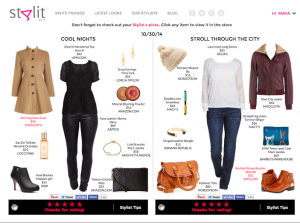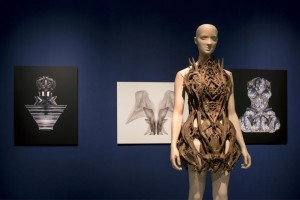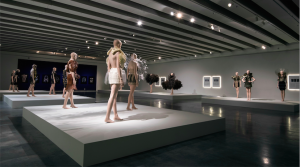FEATURES Smart Fashion, Made in Tel Aviv
Israel is a smart melting pot. Here you can find a little bit of everything but somehow the different bits and pieces almost always end up intertwining in the best possible ways. In such a landscape of diversity and exchange, collaborations occur between people and fields that seem to have nothing in common. Israel’s strength, therefore, is to create “smart” blends, in which each component may be enriched by such unions. One of the most captivating blends made in Tel Aviv in the past few years is the one between fashion and technology.
Fash&Tech – this is how people refer to the worldwide trend – originates from a collaboration between technology geeks and fashion victims, two categories of people that Tel Aviv certainly doesn’t lack. The goal is to take the world and business of fashion to a more sophisticated level with ideas and devices. These ideas were implemented by a number of Israelis who turned HTML coding into the Yiddish of our days.
“The fusion between fashion and technology is fairly new, and is now gaining momentum because of the growing importance of e-commerce in the fashion business,” said Viktoria Kanar, a Fash&Tech expert based in Tel Aviv. Kanar explained that Fash&Tech in Israel often relates to digital solutions which help customers find clothing and accessories, matching their taste, budget and size.
The topic is so popular at the moment that the Holon Fashion Week – an annual, intellectual fashion event that is held in the Israeli city of Holon – hosted a workshop about the trend. The event hosted some of the Israeli leaders in the field, such as Intel’s New Devices Group, who introduced MICA, their new smart bracelet: “It’s a unique opportunity – the potential of wearable technologies is huge,” said Michal Wosk, Product Manager of the group.
The writing “Don’t make it wearable… make it fashionable,” then appeared on the screen, a provocation that referred to the often poor esthetic value of wearable devices.
The event also featured a panel of representatives from eight Israeli Fash&Tech startup companies. Famuza is a social network for emerging designers, while Keeprz is an app dealing with digital coupons.
 From among the Fash&Tech startup companies, came Stylit, an online personal styling service that was founded and created in Tel Aviv. Stylit allows its female users to find the pieces of clothing that best suit them with just a few clicks of the mouse.
From among the Fash&Tech startup companies, came Stylit, an online personal styling service that was founded and created in Tel Aviv. Stylit allows its female users to find the pieces of clothing that best suit them with just a few clicks of the mouse.
“We’re bringing personal styling to the masses,” said Maya Kramer, stylist and co-founder of the company, one foot in Tel Aviv, the other in New York. “All women would like to have a personal stylist who gives them advice on clothing, but it’s an expensive service and sometimes they don’t even feel comfortable letting a stranger into their closet.” Stylit is a free service that is based on a technology that groups users into categories and directs them to complete outfits – from the coat to the boots and to the purse – that fit their fashion taste. Upon their first visit to the site, users are required to complete an enjoyable questionnaire n to help determine their individual taste. The combined work of a software and a team of stylists produces every week a new outfit that is sent to the users via email. If the users like the clothes, they can click on them and they will be addressed to the official purchasing page of the item: it’s an advantageous, “organic” kind of advertising.
“Stylit is technology with a human touch,” said Kramer.
Fash&Tech, however, is also related to the physical, creative aspect of fashion: the magical process of designing new clothes. At Holon Fashion Week, a new exhibition was displayed, hosted by the Design Museum of Holon. “New Couture”, a collection of garments – all created with a 3D printer – by Dutch designer Iris Van Herpen. Thanks to the 3D techniques, the futuristic, at times grotesque pieces are perfected in every single detail, resulting in a piece of art that is more likely to be exposed in a museum or worn by Lady Gaga, rather than becoming part of a concretely wearable collection.
 New frontiers raise new questions.
New frontiers raise new questions.
How is the creative process evolving, in a historical era that is strongly characterized by the impact of technology? We live in a time with an overload of information, coming from all directions, making it harder than ever to absorb only what is relevant and to create original products.
The tools, as “smart” as they are, exist, and we can’t ignore them. Using them in a “smart” fashion shall be our goal.
*Simone Somekh is a student at Bar-Ilan University, Israel, and a freelance writer.
Photo: Sharon Derhy / Design Museum Holon.

